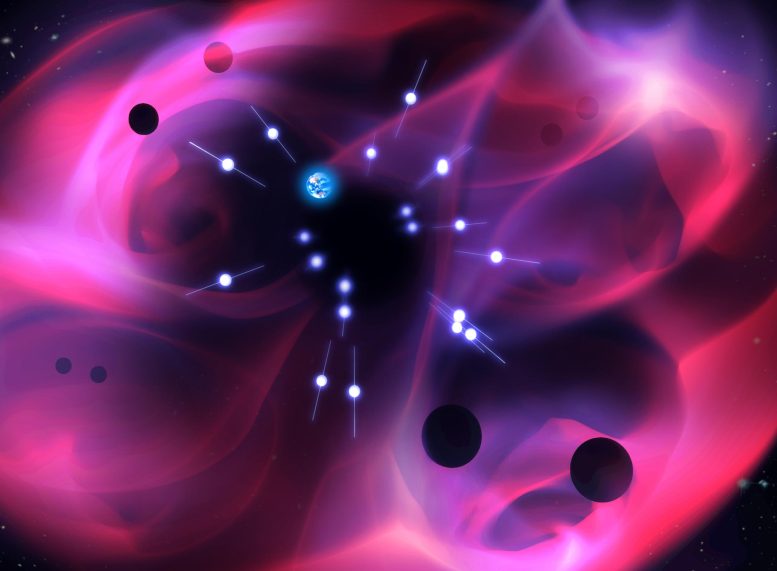
An array of pulsars around the Earth embedded in a gravitational wave background from supermassive black hole binaries. The signals from the pulsars measured with a network of global radio telescopes are affected by the gravitational waves and allow for the study of the origin of the background. Credit: C. Knox
A multinational team of astronomers, including scientists from the University of Birmingham’s Institute for Gravity Wave Astronomy, has reported the findings of a comprehensive search for a background of ultra-low frequency gravitational waves.
These light-year-scale ripples, a consequence of Einstein’s general theory of relativity, permeate all of spacetime and might be produced by mergers of the Universe’s most massive black holes or by events that occurred shortly after the Big Bang. For decades, scientists have been looking for conclusive evidence of these signals.
The International Pulsar Timing Array (IPTA), joining the work of several astrophysics collaborations from around the world, recently completed its search for gravitational waves in their most recent official data release, known as Data Release 2 (DR2).
This data set consists of precision timing data from 65 millisecond pulsars – stellar remnants which spin hundreds of times per second, sweeping narrow beams of radio waves that appear as pulses due to the spinning – obtained by combining the independent data sets from the IPTA’s three founding members: The European Pulsar Timing Array (EPTA), the North American Nanohertz Observatory for Gravitational Waves (NANOGrav), and the Parkes Pulsar Timing Array in Australia (PPTA).
These combined data reveal strong evidence for an ultra-low frequency signal detected by many of the pulsars in the combined data. The characteristics of this common-among-pulsars signal are in broad agreement with those expected from a gravitational wave “background.”
The gravitational wave background is formed by many different overlapping gravitational-wave signals emitted from the cosmic population of supermassive binary black holes (i.e. two supermassive black holes orbiting each other and eventually merging) – similar to background noise from the many overlapping voices in a crowded hall.
This result further strengthens the gradual emergence of similar signals that have been found in the individual data sets of the participating pulsar timing collaborations over the past few years.
Professor Alberto Vecchio, Director of the Institute for Gravitational Wave Astronomy at the University of Birmingham, and member of the EPTA, says: “The detection of gravitational waves from a population of massive black hole binaries or from another cosmic source will give us unprecedented insights into how galaxy form and grow, or cosmological processes taking place in the infant universe. A major international effort of the scale of IPTA is needed to reach this goal, and the next few years could bring us a golden age for these explorations of the universe.”
“This is a very exciting signal! Although we do not have definitive evidence yet, we may be beginning to detect a background of gravitational waves,” says Dr. Siyuan Chen, a member of the EPTA and NANOGrav, and the leader of the IPTA DR2 search and publication.
Dr. Boris Goncharov from the PPTA cautions on the possible interpretations of such common signals: “We are also looking into what else this signal could be. For example, perhaps it could result from noise that is present in individual pulsars’ data that may have been improperly modeled in our analyses.”
To identify the gravitational-wave background as the origin of this ultra-low frequency signal, the IPTA must also detect spatial correlations between pulsars. This means that each pair of pulsars must respond in a very particular way to gravitational waves, depending on their separation on the sky.
These signature correlations between pulsar pairs are the “smoking gun” for a gravitational-wave background detection. Without them, it is difficult to prove that some other process is not responsible for the signal. Intriguingly, the first indication of a gravitational wave background would be a common signal like that seen in the IPTA DR2. Whether or not this spectrally similar ultra-low frequency signal is correlated between pulsars in accordance with the theoretical predictions will be resolved with further data collection, expanded arrays of monitored pulsars, and continued searches of the resulting longer and larger data sets.
Consistent signals like the one recovered with the IPTA analysis have also been published in individual data sets more recent than those used in the IPTA DR2, from each of the three founding collaborations. The IPTA DR2 analysis demonstrates the power of the international combination giving strong evidence for a gravitational wave background compared to the marginal or absent evidence from the constituent data sets. Additionally, new data from the MeerKAT telescope and from the Indian Pulsar Timing Array (InPTA), the newest member of the IPTA, will further expand future data sets.
“The first hint of a gravitational wave background would be a signal like that seen in the IPTA DR2. Then, with more data, the signal will become more significant and will show spatial correlations, at which point we will know it is a gravitational wave background. We are very much looking forward to contributing several years of new data to the IPTA for the first time, to help achieve a gravitational wave background detection,” says Dr. Bhal Chandra Joshi, a member of the InPTA.
Given the latest published results from the individual groups who now all can clearly recover the common signal, the IPTA is optimistic for what can be achieved once these are combined into the IPTA Data Release 3. Work is already ongoing on this new data release, which at a minimum will include updated data sets from the four constituent PTAs of the IPTA. The analysis of the DR3 data set is expected to finish within the next few years.
Dr. Maura McLaughlin of the NANOGrav collaboration says, “If the signal we are currently seeing is the first hint of a gravitational wave background, then based on our simulations, it is possible we will have more definite measurements of the spatial correlations necessary to conclusively identify the origin of the common signal in the near future.”
Reference: “The International Pulsar Timing Array second data release: Search for an isotropic Gravitational Wave Background” by J Antoniadis, Z Arzoumanian, S Babak, M Bailes, A-S Bak Nielsen, P T Baker, C G Bassa, B Bécsy, A Berthereau, M Bonetti, A Brazier, P R Brook, M Burgay, S Burke-Spolaor, R N Caballero, J A Casey-Clyde, A Chalumeau, D J Champion, M Charisi, S Chatterjee, S Chen, I Cognard, J M Cordes, N J Cornish, F Crawford, H T Cromartie, K Crowter, S Dai, M E DeCesar, P B Demorest, G Desvignes, T Dolch, B Drachler, M Falxa, E C Ferrara, W Fiore, E Fonseca, J R Gair, N Garver-Daniels, B Goncharov, D C Good, E Graikou, L Guillemot, Y J Guo, J S Hazboun, G Hobbs, H Hu, K Islo, G H Janssen, R J Jennings, A D Johnson, M L Jones, A R Kaiser, D L Kaplan, R Karuppusamy, M J Keith, L Z Kelley, M Kerr, J S Key, M Kramer, M T Lam, W G Lamb, T J W Lazio, K J Lee, L Lentati, K Liu, J Luo, R S Lynch, A G Lyne, D R Madison, R A Main, R N Manchester, A McEwen, J W McKee, M A McLaughlin, M B Mickaliger, C M F Mingarelli, C Ng, D J Nice, S Osłowski, A Parthasarathy, T T Pennucci, B B P Perera, D Perrodin, A Petiteau, N S Pol, N K Porayko, A Possenti, S M Ransom, P S Ray, D J Reardon, C J Russell, A Samajdar, L M Sampson, S Sanidas, J M Sarkissian, K Schmitz, L Schult, A Sesana, G Shaifullah, R M Shannon, B J Shapiro-Albert, X Siemens, J Simon, T L Smith, L Speri, R Spiewak, I H Stairs, B W Stappers, D R Stinebring, J K Swiggum, S R Taylor, G Theureau, C Tiburzi, M Vallisneri, E Wateren, A Vecchio, J P W Verbiest, S J Vigeland, H Wahl, J B Wang, J Wang, L Wang, C A Witt, S Zhang and X J Zhu, 12 January 2022, Monthly Notices of the Royal Astronomical Society.
DOI: 10.1093/mnras/stab3418

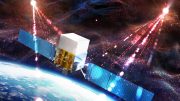
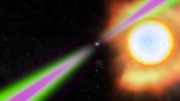
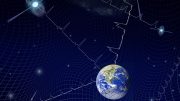

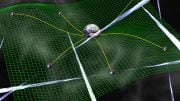
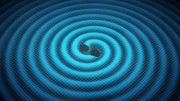
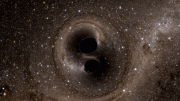
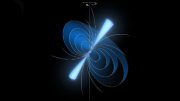
Is Gravity the answer to the universe’s missing Monopole Problem ? I think gravity as an attractive force is our missing monopole problem. I was just watching Why Is The Universe The Same Everywhere? at:
https://youtu.be/5JM9RJFMHgc?t=682 and it says: ” On a variety of scales there appear to be no monopoles at all in the observable universe, a monopole is hypothesized to be just half a traditional magnet …this is a problem because there is no fundamental reason why there shouldn’t be any monopoles, Not only that but our current understanding of the universe’s earliest moments suggests that the cosmos should be in fact flooded by them. “
Let’s call the entire visible universe (including Webb) 1 VU (One VU), why is it not possible that what we think of the expansion of the universe as simply, a ride on a tiny portion of a massive gravitational wave, whose wavelength is thousands of VU’s long? Such a small portion of a large wave would simply appear to be an endlessly expanding universe. (By the way the real reason for the expansion of the universe is; social distancing!)
… a geometry has a wave, okay…
This unit ly gravitational wave ìs radiatinģ fròm potentially stable position.